Kyoto's most popular area, an audio guide to the Kiyomizudera Area
26-001-01%E6%B8%85%E6%B0%B4%E5%AF%BA.jpg)
Kiyomizu-dera Temple area guide
Kiyomizu-dera Temple is Kyoto's most well-known and visited area making it one of the most impressive tourism destinations in the world. Within the Kiyomizu-dera temple complex are many famous locations to visit, including the three storied pagoda, Otowa waterfall, and many other points of interest. Three times a year the temple is beautifully lit up at night to showcase the natural beauty of the changing Japanese seasons in spring, summer, and fall. This is one of the most enchanting times to visit the area. The paths leading up to the famous temple are also lined with beautiful sites and shops. Many Japanese come to the temple to pray for safety, strengthening of relationship bonds, and health. Kiyomizu-dera Temple is a great start for the exploration of the East side of Kyoto and is the starting point for one of the classic Kyoto routes that will lead you to some of Kyoto's most impressive sights and areas.
26-001-01%E6%B8%85%E6%B0%B4%E5%AF%BA.jpg)
A Kiyomizu-dera Temple
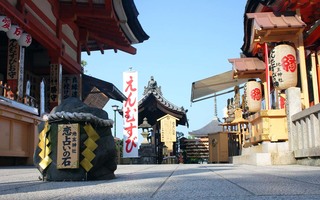
B Jishu Shrine
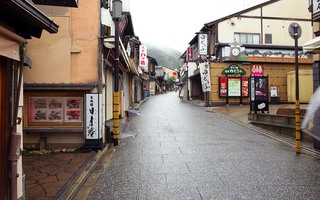
C Kiyomizu-zaka
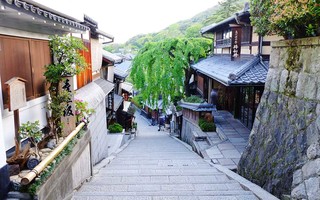
D Sannen-zaka
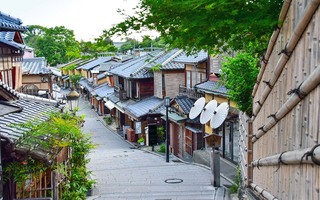
E Ninei-zaka, Ninen-zaka
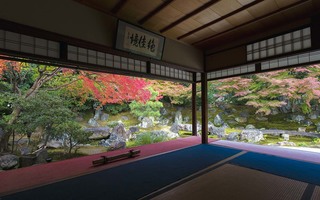
F Entoku-in Temple
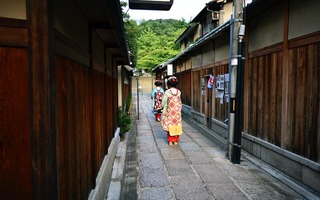
G Nene's Road and the Stone wall path
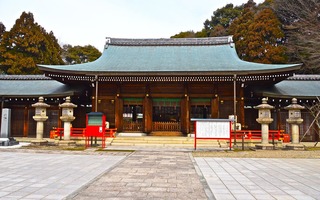
H Kyoto Ryozen Gokoku Shrine
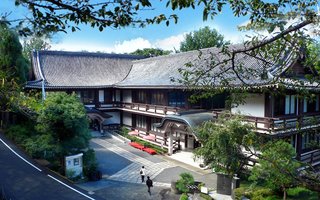
I Ryozen Museum of History
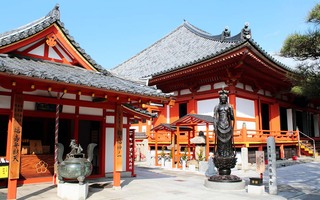
J Rokuharamitsuji Temple
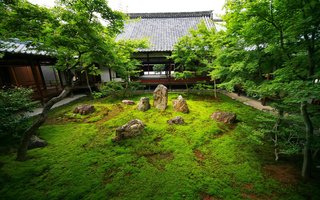
K Kenninji Temple
A
Kiyomizu-dera Temple
26-001-01%E6%B8%85%E6%B0%B4%E5%AF%BA.jpg)
It is believed that the origins of Kiyomizu-dera Temple date back to 778 and is attributed to Enchin Shonin. There were hermits who practiced meditation by a waterfall deep in the mountains. The history of the temple dates back more than 1200 years. The origin of the temple proper starts with Sakanoue no Tamuramaro who came to Otowa Mountain to hunt deer for his ill wife. In the mountains he met Enchin Shonin who talked about the sanctity of life. The two decided to build a temple centered around the mountain waterfall, to repent for the sins of taking the lives of living beings.
The temple is now open to the general public and was rebuilt to it's present design in 1633 under the patronage of Tokugawa Iemitsu, the third shogun of the Tokugawa era. The grounds now cover over 130,000 square meters and include over 30 structures such as a main hall designated as a National Treasure, a wooden stage, and various gates. The temple and it`s stage were constructed without the use of nails. Adding to the fame of Kiyomizu-dera Temple is a popular Japanese proverb known throughout Japan. Kiyomizudera no butai kara tobioriru, "jump off the stage at Kiyomizu" , in other words "to take the plunge". The temple gets it's name from the waterfall it is built around, meaning “Pure Water Temple.” Kiyomizu-dera Temple is listed as a UNESCO World Heritage Site.
B
Jishu Shrine

Jishu Shrine, on the grounds of Kiyomizu-dera Temple, is known for the enshrinement of the God of “relationship bonds.” It is a famous power spot for those looking to pray for solid relationships, especially popular with couples looking to cement their bond. There are two “Love Stones” placed 18 meters apart on the temple grounds and it is said that if you are able to walk from one rock to the other with your eyes closed your wishes will come true. It is thought that the shrine dates back to the founding of Japan, and recent archaeological work discovered that the enshrined “Love Stone” dates back to the Jomon period. On the shrine grounds, the main hall, hall of worship, and gate are designated as Important Cultural Properties by the government of Japan and also part of the UNESCO World Heritage Site. The current shrine was rebuilt in 1633 under the edict of Tokugawa Iemitsu, the third Tokugawa shogun. This temple is an excellent chance to see, and learn about the different architectural styles of the Nara period built into the main shrine. This area is a very popular spot for viewing the cherry blossoms in spring.
C
Kiyomizu-zaka

The slope approaching Kiyomizu-dera Temple from below, Higashi Oji Dori Matsubara, is a wonderful area lined with shops, restaurants, and more. This area was built up around the road leading up to the temple that pilgrims and temple visitors would have used, and is the shortest distance connecting the temple to Tokaido Road which connected Kyoto and Tokyo. The road and atmosphere has changed little since old times with an infusion of new shops among the older traditional buildings, a path loaded with many interesting things to see. The area where the path connects with the Gojozaka path is particularly interesting to explore. There is a large concentration of shops where you can rent kimono and yukata to have a truly Kyoto experience. Even watching others walk around in their kimono adds to an unforgettable visit to Kyoto.
D
Sannen-zaka

Kyoto's popular Sannei-zaka is more widely known as Sannen-zaka. There is a legend to how this path got it`s name. It was named after Nene, the wife of Toyotomi Hideyoshi who walked to Kiyomizu-dera Temple to pray for the birth of a child. A number of the roads leading up to Kiyomizu-dera Temple are popular tourist attractions themselves and are part of the wonderful attractions on the east side of Kyoto. The area is designated as a “traditional building preservation” in the city of Kyoto. The charred cedar walls of the buildings and classic roof tiles make this an iconic spot to see and feel traditional Kyoto and Japan. There are wonderful shops, cafes, and restaurants to discover along the pathway.
E
Ninei-zaka, Ninen-zaka

The cobble stoned path connecting Yasaka Shrine and Kiyomizu-dera Temple is lined with typical Kyoto cafes and shops that give you a chance to rest, and get a taste for the history and culture of Kyoto. There are two theories as to where the name for this area originated. One theory is it was named in 807 during the second year of of the Daido era, and another is that because it lies below the more popular Three Year Slope, it was named the “Second Year” slope. There is a legend that if you trip and fall on this path you will die within two years so be careful! A Japanese saying warns to “Be careful on stone steps and slopes.” The well preserved cobblestone path creates a feeling of old Kyoto that can not be found in many places. The area has been featured in many works of art and has inspired many famous artists of the past. Enjoy a walk through here designated as a “Traditional Building Preserved” area by the national government of Japan for the traditional architecture and classic scenery on hand.
F
Entoku-in Temple

This is the temple where Nene, the famous historical figure and wife of shogun Toyotomi Hideyoshi lived for 19 years, being built in his memory. It's most well known for its landscaped zen garden and painted sliding doors. After the death of Hideyoshi, Nene moved here and brought with her from the castle, the garden and a room that held very special memories for her. After her move she still remained very respected and influential, being visited by popular artists, politicians, military leaders, and other respected figures. The current Entokuin is known as a temple that houses a shrine dedicated to the ”Three Sided Daikokuten" which is the god Toyotomi Hideyoshi believed was the reason for his ascension to supreme ruler of Japan. The three sided Daikokuten is a statue of the three "ten" union with three faces, with Daikokuten in front, Bishamonten on the right, and Benzaiten on the left; the body being Daikokuten. It is believed that Hideyoshi worshipped this god from a young age. The garden Nene moved from Fushimi Castle and then arranged by the famous Kobori Enshu, is called the “North Garden”. It is rare in that the garden incorporates large boulders. The garden is also one of the finest examples of garden design from the Momoyama period of Japanese history.
G
Nene's Road and the Stone wall path

"Nene no Michi" or “Nene's Road” is a beautiful cobblestone road with a total length of about 250 meters that passes from Maruyama Park towards Kiyomizu-dera Temple on the west side of Kodai-ji Temple. Nene was the female companion of Toyotomi Hideyoshi, one of the first men to unite Japan under his rule. After his death she moved to this area and the road became know as Nene no Michi, Nene's path, after her death. It is a popular attraction throughout the year and as a place to stroll and see a traditional Kyoto. The area is filled with famous temples, beautiful cafes, impressive classic ryokan, and much more. A visit to Nene's Road fulfills all those images of Kyoto and gives you a chance to explore the history of Kyoto and Japan. Be sure to check out the “Stone Wall Path” which is a narrow alley accessible from Nene's road.
H
Kyoto Ryozen Gokoku Shrine

Kyoto Ryozen Gokoku is a shrine located in Kyoto honoring 1043 past heroes in Japanese history, especially from the Bakumatsu period of civil strife. The Bakamatsu period was a time of serious social upheaval in the late 1800`s when Japan was transitioning from a feudal samurai state to a modern democratic one. The shrine was built in 1868. He is one of the main figures credited with the foresight, influence, and vision to help usher in the reforms needed to form Japan into the country it is today. He was a samurai from the island of Shikoku who saw the needs to reform Japan after centuries of self isolation and increasing pressure from foreign countries. He was assassinated in Kyoto and buried next to his counterpart Nakaoka Shintaro . Most of the monuments here are dedicated to the spirits of past heroes, but the cremated remains of Sakamoto and Nakaoka are under their respective shrines. Every year on November 15th there is a festival to celebrate the birth of Sakamoto Ryoma and remember his virtues and spirit. The shrine also holds the remains of Kido Takayoshi from the Choshu area, considered one of the three great nobles who ushered in a new Japan in 1868.
Every year on May 26, the "Shoukiku-sai Festival" is held to commemorate the anniversary of the death of Kido Takayoshi so that his virtuous legacy will live on for future generations.
I
Ryozen Museum of History

The Ryozen Museum of History is dedicated to the Bakumatsu and Meiji Restoration. These were significant times in Japanese history when the country would transition from the centuries of isolation under the rule of the Tokugawa clan to a modern state. Opened in 1970 it is also a center for the study of the times, and supports the publication of authors and scholars. Kyoto was a center for the transitional politics of the time for the samurai, daimyo, politicians, and the emperor at the time. The artists, writers, and intellectuals were concentrated in Kyoto and this museum tells the story of this formative and important time. You can see artifacts, learn and connect with Japanese historical figures like Sakamoto Ryoma, Tokugawa Yoshinobu, and many more. The museum often holds exhibitions highlighting some important aspect of this fascinating time in Japanese history. The permanent collection gives visitors a chance to see and learn about Japan before and after the transition to a modern state.
J
Rokuharamitsuji Temple

Rokuharamitsuji Temple is a buddhist temple located in the eastern side of Kyoto in the Higashiyama district. The temple was founded in 951 by a famous Japanese priest named Kuya and dedicated to one of the sons of Emperor Daigo. Kuya lived from 903 to 972 and promoted the teaching of buddhist sutra chant to the common folk in order to reach salvation. Kuya is said to have been of imperial descent, but gave up the life of an aristocrat to travel the country teaching his beliefs and helping people and communities along the way. There is a legend that during an epidemic plaguing the city of Kyoto, Kuya carved the 11 faces of the Kannon and saved the lives of the people. During that epidemic Kuya made cups from bamboo to give a special tea of pickled Japanese plums and kelp to those who were sick. This creation is still celebrated around the new years by the Japanese. After Kuya`s death in 977 one of his disciples wrote of his teaching and the name for the temple was decided. Rokuharamitsu refers to the six practices needed to reach enlightenment; you must master morality, devotion, wisdom, determination, generosity, and patience. Many of the buildings were burnt down during the civil wars at the end of the Heian era in the 1100's. The temple was rebuilt in 1363 , damaged in the Meiji Era and most recently restored in 1969. Today many people visit it as the 17th stop on the 37 stop pilgrimage of the area.
K
Kenninji Temple

Kenninji Temple is Kyoto's oldest zen temple and at the rear of the stone paved roads of Gion. This temple is considered to be one of the five most important zen temples in Kyoto. There are 7 main halls and representative of the thought that 7 halls are ideal for a buddhist temple. Kenninji temple was founded in 1202 by the monk Eisei, who is credited with introducing the practice of zen buddhism to Japan. The temple served as his founding abbot and he is also buried on the temple grounds. The temple was originally a place where different forms of buddhism were practiced, but under the direction of the 11th abbot it became a purely zen temple. Many famous Japanese buddhist monks have trained here, including the zen master Dogen who would found the Soto sect of zen buddhism later. The buildings on the temple grounds have been destroyed by fire and war a number of times, but rebuilt in the 13th and 16th centuries. There are many artifacts here that are registered as “Important National Cultural Properties” by the Japanese government. In addition to being the largest temple in Kyoto, there are wonderful places to explore on the temple grounds. There are three unique and beautiful gardens to see. The ○△□ (maru-sankaku-shikaku) garden can be loosely translated as the circle, triangle, square garden and is a recent addition being built in 2006. The garden is inspired by a work of calligraphy by Sengai, a monk of the rinzai sect of zen buddhism. The circle, triangle, and square are said to be able to represent any form in the universe of any object and therefore representations of origin. There is also a zen garden behind the main building where you can see beautiful maple trees and rocks representing the Buddha and two zen monks. The temple also holds a number of impressive pieces of art. You can see twin dragons painted on the temple ceilings, the gods of thunder and lighting on folding screens, and more.